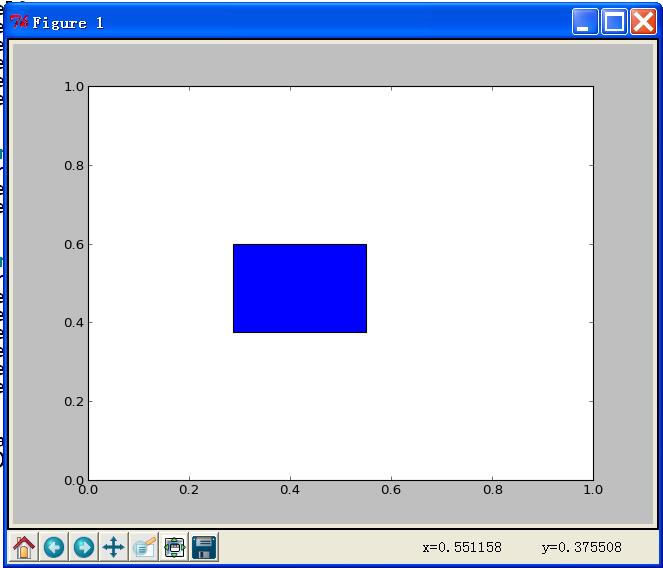Python入门教程2. 字符串基本操作【运算、格式化输出、常用函数】 原创
前面简单介绍了Python基本运算,这里再来简单讲述一下Python字符串相关操作
1. 字符串表示方法
>>> "www.jb51.net" #字符串使用单引号(')或双引号(")表示 'www.jb51.net' >>> 'www.jb51.net' 'www.jb51.net' >>> "www."+"jb51"+".net" #字符串可以用“+”号连接 'www.jb51.net' >>> "#"*10 #字符串可以使用“*”来代表重复次数 '##########' >>> "What's your name?" #单引号中可以直接使用双引号,同理双引号中也可以直接使用单引号 "What's your name?" >>> path = r"C:\newfile" #此处r开头表示原始字符串,里面放置的内容都是原样输出 >>> print(path) C:\newfile
2. 字符串运算
>>> str1 = "python test" >>> "test" in str1 #这里in用来判断元素是否在序列中 True >>> len(str1) #这里len()函数求字符串长度 11 >>> max(str1) 'y' >>> min(str1) ' '
3. 字符串格式化输出(这里重点讲format函数)
>>> "I like %s" % "python" #使用%进行格式化输出的经典表示方式 'I like python' >>> dir(str) #列出字符串所有属性与方法 ['__add__', '__class__', '__contains__', '__delattr__', '__dir__', '__doc__', '__eq__', '__format__', '__ge__', '__getattribute__', '__getitem__', '__getnewargs__', '__gt__', '__hash__', '__init__', '__init_subclass__', '__iter__', '__le__', '__len__', '__lt__', '__mod__', '__mul__', '__ne__', '__new__', '__reduce__', '__reduce_ex__', '__repr__', '__rmod__', '__rmul__', '__setattr__', '__sizeof__', '__str__', '__subclasshook__', 'capitalize', 'casefold', 'center', 'count', 'encode', 'endswith', 'expandtabs', 'find', 'format', 'format_map', 'index', 'isalnum', 'isalpha', 'isdecimal', 'isdigit', 'isidentifier', 'islower', 'isnumeric', 'isprintable', 'isspace', 'istitle', 'isupper', 'join', 'ljust', 'lower', 'lstrip', 'maketrans', 'partition', 'replace', 'rfind', 'rindex', 'rjust', 'rpartition', 'rsplit', 'rstrip', 'split', 'splitlines', 'startswith', 'strip', 'swapcase', 'title', 'translate', 'upper', 'zfill']
① format(*args,**kwargs) 采用*args赋值
>>> str = "I like {1} and {2}" #这里{1}表示占位符(注意:这里得从{0}开始)
>>> str.format("python","PHP")
Traceback (most recent call last):
File "<pyshell#5>", line 1, in <module>
str.format("python","PHP")
IndexError: tuple index out of range
>>> str = "I like {0} and {1}"
>>> str.format("python","PHP")
'I like python and PHP'
>>> "I like {1} and {0}".format("python","PHP")
'I like PHP and python'
>>> "I like {0:20} and {1:>20}".format("python","PHP")#{0:20}表示第一个位置占据20个字符,并且左对齐。{1:>20}表示第二个位置占据20个字符,且右对齐
'I like python and PHP'
>>> "I like {0:.2} and {1:^10.2}".format("python","PHP")#{0:.2}表示第一个位置截取2个字符,左对齐。{1:^10.2}表示第二个位置占据10个字符,且截取2个字符,^表示居中
'I like py and PH '
>>> "age: {0:4d} height: {1:6.2f}".format("32","178.55") #这里应该是数字,不能用引号,否则会被当作字符串而报错!
Traceback (most recent call last):
File "<pyshell#0>", line 1, in <module>
"age: {0:4d} height: {1:6.2f}".format("32","178.55")
ValueError: Unknown format code 'd' for object of type 'str'
>>> "age: {0:4d} height: {1:8.2f}".format(32,178.5523154) #这里4d表示长度为4个字符的整数,右对齐。8.2f表示长度为8,保留2位小数的浮点数,右对齐。
'age: 32 height: 178.55'
② format(*args,**kwargs) 采用**kwargs赋值
>>> "I like {str1} and {str2}".format(str1 = "python",str2 ="PHP")
'I like python and PHP'
>>> data = {"str1":"PHP","str2":"Python"}
>>> "I like {str1} and {str2}".format(**data)
'I like PHP and Python'
小结:对齐方式为:
| < | 左对齐 |
| > | 右对齐 |
| ^ | 居中对齐 |
4. 字符串函数
>>> # isalpha()判断字符串是否全部为字母
>>> str1 = "I like python" #这里str1里面有空格
>>> str1.isalpha()
False
>>> str2 = "pythonDemo" #这里为全部是字母
>>> str2.isalpha()
True
>>> # split()分割字符串
>>> smp = "I like Python"
>>> smp.split(" ")
['I', 'like', 'Python']
>>> # strip()去除字符串两端空格 ,类似的,lstrip去除左侧空格,rstrip去除右侧空格
>>> strDemo = " python demo "
>>> strDemo.strip() #类似于php中的trim()函数
'python demo'
>>> "****python**".strip("*") #strip()函数还可删除指定字符
'python'
字符串常用函数【转换、判断】
split() |
分割字符串 |
strip() |
去除字符串两端空格 |
upper() |
转大写 |
lower() |
转小写 |
capitalize() |
首字母转大写 |
title() |
转换为标题模式(字符串中所有首字母大写,其他字母小写) |
swapcase() |
大写转小写,小写转大写(如:"I Like Python".swapcase() 得到i lIKE pYTHON) |
isupper() |
判断字母是否全部为大写 |
islower() |
判断字母是否全部为小写 |
istitle() |
判断是否为标题模式(字符串中所有单词首字母大写,其他小写) |
isalpha() |
判断字符串是否全部为字母 |
isdigit() |
判断字符串是否全部为数字 |
isalnum() |
判断字符串是否仅包含字母与数字 |
>>> #字符串拼接(对于+不适用的情况下可以使用)
>>> smp = "I like Python"
>>> c = smp.split(" ")
>>> c = "I like python".split()
>>> type(c) #这里检测类型,可以看到c为列表
<class 'list'>
>>> "*".join(c)
'I*like*Python'
>>> " ".join(c)
'I like Python'
>>> " ".join(["I","Like","python"]) #这里可以直接使用列表作为join函数的参数
'I Like python'
>>> " ".join("abcd") #也可直接使用字符串作为join函数的参数
'a b c d'
>>> # count()函数统计指定字符串出现次数
>>> "like python,learn python".count("python")
2
>>> # find()函数查找指定字符串出现位置
>>> "python Demo".find("python")
0
>>> "python Demo".find("Demo")
7
>>> # replace(old,new)函数替换指定字符串(old)为新字符串(new)
>>> "I like php".replace("php","python")
'I like python'
简单入门教程~
基本一看就懂~O(∩_∩)O~
未完待续~~欢迎讨论!!
